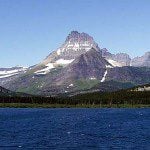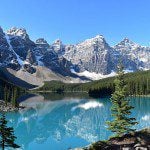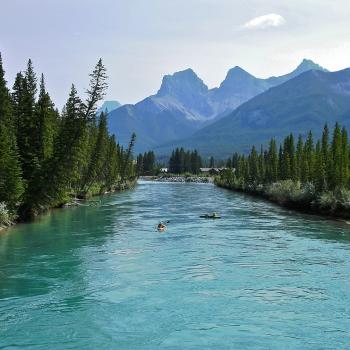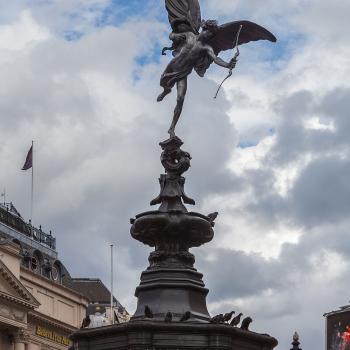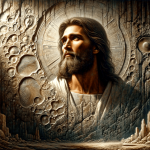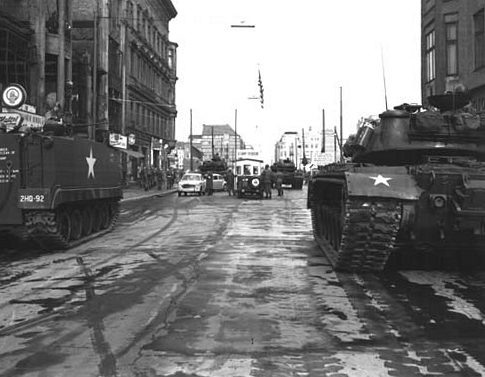
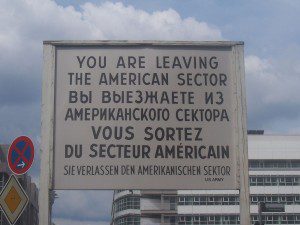
If you need to enlarge it, you can click on the photo. And you can click on the photo a second time to enlarge it further.
Our second to last full day in Berlin, late last week, focused on Nazism and Communism.
Not very cheery subjects, but I’m absolutely dedicated to the notion that the crimes of these two mutually hostile but closely related totalitarian ideologies must not be forgotten.
We walked over, first, to the famous Checkpoint Charlie, which, until the collapse of East Germany, was the transit point between the American zone (i.e., West Berlin) and the Soviet zone (i.e., East Berlin) of the city.
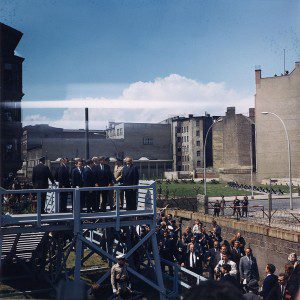
Can you find him?
(Click on the photo to enlarge it.)
Much is gone, but the guard shack remains. And the “Museum Haus am Checkpoint Charlie,” founded by the human rights activist Dr. Rainer Hildebrandt, is really a must-see. And I say that despite the fact that it’s crowded and that the displays badly need updating. (There’s simply too much prose to wade through, and the graphics look as if they stem from the fifties and sixties.)
Then we walked over to an exhibit, partly open-air and partly indoors, called “Topographie des Terrors.” It sits on the site of the former headquarters of the SA, the SS, and the Geheime Staatspolizei (aka the “Gestapo”).
People were interrogated and tortured and sometimes executed on these grounds. And the entire apparatus of Nazi oppression and mass murder, including the concentrations camps, was centrally administered from them.
We spent several informative but depressing hours looking at the exhibits.
I continue to find it simply inconceivable that a whole well-staffed apparatus could be assembled to engage in such crimes. I know it, intellectually. But I still can’t really grasp it.
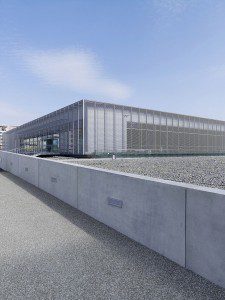
(Click to enlarge, again to enlarge further.)
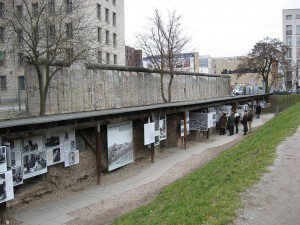
(Click to enlarge. Click again to enlarge further.)
Note the building that you can see in the photo immediately above, just on the other side of that surviving section of the Berlin Wall. Here it is from the other side, in a photograph dating to 1938:
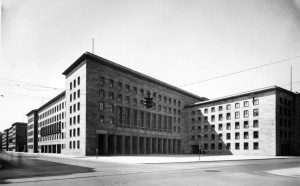
(Click to enlarge.)
I’m astonished that it survives in any way. It was built as the headquarters of the German air force, Hermann Goering’s Luftwaffe — an enormous example of what has been called Nazi “intimidation architecture.”
After the fall of the Third Reich, it became the “House of Ministries” of the new Communist dictatorship in East Berlin.
Now, it’s the seat of Germany’s Federal Finance Ministry, which is, among other things, responsible for taxes.
Altogether, a building of evil omen.
We walked along the Wilhelmstrasse, a beautiful, tree-lined boulevard.
It was so wide because it was intended to be — and was — a chief location for Nazi parades. If you’ve seen photographs of Hitler reviewing military parades in Berlin, or of him riding in an open car through Berlin among adoring multitudes, the odds are excellent that those photographs were taken somewhere along the Wilhelmstrasse. This was the administrative center of Hitler’s Thousand-Year Reich from 1933 through 1945. The whole thing was run from this area.
Breathtaking.
We passed a monument to a man who was executed for attempting to assassinate the Nazi leadership. (We had already, the day before, seen the courtyard where Col. Claus von Stauffenberg — think of Tom Cruise, if you must, in Valkyrie — was executed in 1944 for his role in another nearly-successful assassination attempt.)
It pleased me to note that a Chinese take-out restaurant now stands very near the location of the bunker in which Adolf Hitler ultimately committed suicide. All traces of that bunker have, it seems, been eliminated, obliterated, erased. There are probably still a few Nazi sympathizers about, and it’s good to deprive them of a shrine. We had a very good dinner at an outdoor cafe very nearby. My father — could he have looked forward from, say, 1944 near Bastogne, or from 1945 at the concentration camp in Mauthausen — would have been very pleased, I think, to have seen his son and his daughter-in-law enjoying such a meal in such a place.
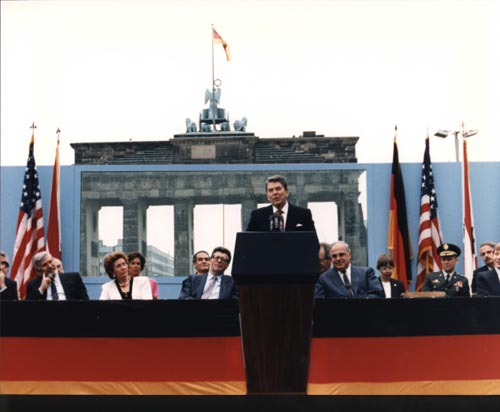
Ronald Reagan at Berlin’s Brandenburg Gate on 12 June 1987. Between him and the gate, but not visible in this photo, was the Berlin Wall.
We kept walking, over to the Brandenburg Gate. The American embassy stands there now, on the formerly “East Berlin” side. Again, we were standing where history was made. Great history. Real history that has made a difference.
Then we walked through the hundreds and hundreds of concrete monoliths of the vast (and controversial) “Monument to the Murdered Jews of Europe,” and, after that rather somber experience, walked home.
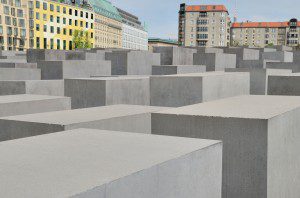
(Click to enlarge. Click again to enlarge further.)
Only one more day in Berlin to account for. Maybe I’ll get to it tomorrow.
Posted from Darmstadt, Germany.



